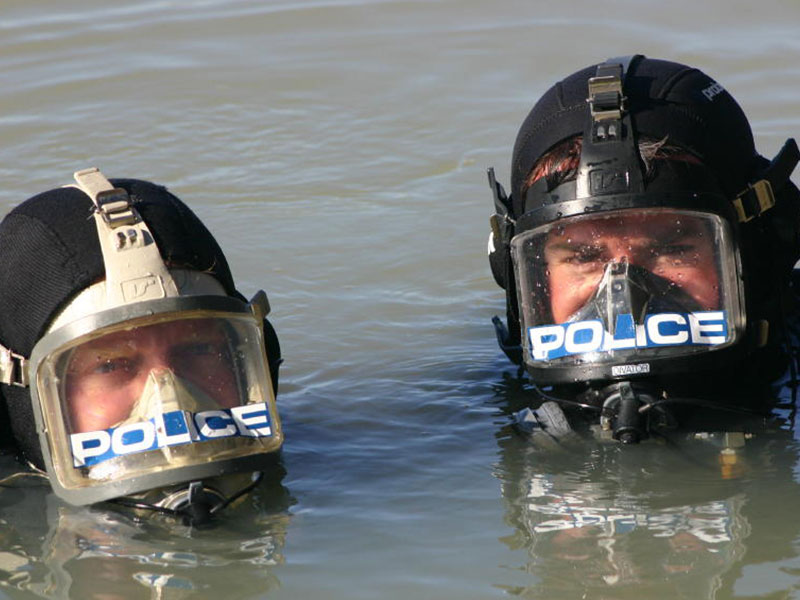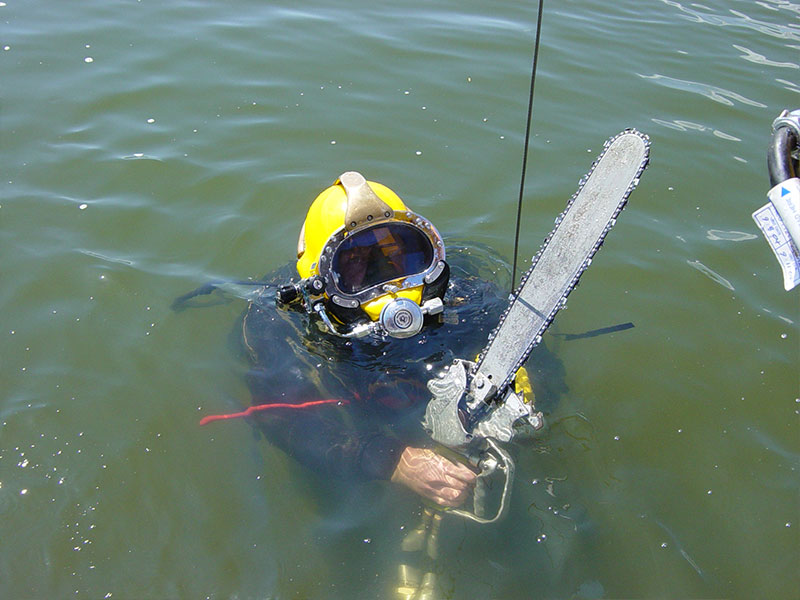Course Overview
The ADAS Remotely Operated Vehicle (ROV) course has, as its foundation, been built around the guidance of the International Marine Contractors Association (IMCA) for entry level ROV Pilot/Technicians.
While the practical training is vital, equally important is the underpinning theory knowledge that must be applied that will reinforce the practical component of the course. A number of core theoretical competencies will be taught covering all of the aspects associated with ROV operations.
Passing the course does not necessarily guarantee you a job, however, if you have one or more of the appropriate support skills shown below, in conjunction with the enhanced training that ADAS offers, then you already have a significant advantage when looking for that first all important ROV employment opportunity.
The majority of ROV pilots are employed in the offshore oil and gas industries. These industries have embraced ROV technology to a very large degree. As oil supplies dwindle, with exploration moving into water depths beyond that which can be usefully achieved by divers, the ROV becomes an increasingly important tool.
The ROV has a wide range of capabilities that include:
- Pre development survey duties.
- Drilling support
- Construction support, working with, and assisting divers
- Trenching and burial of pipes and cables
- Condition inspections of offshore structures.
- Pipeline surveys
There is also a rapid expansion in the use of ROVs in the onshore sectors especially in the scientific arena. The employment focus however, for most potential pilots is, of course, the offshore sectors where extremely attractive remuneration packages are offered.
Almost all ROV personnel are employed directly by ROV operators or contractors. There are a number of large internationally based ROV survey companies as well as many smaller operations. All have one common requirement-the need to employ proficient and skilled ROV pilots. The ADAS course is designed to enhance your prospects of gaining meaningful employment by ensuring that you have all the necessary skills to help you to succeed in your chosen career path.
ROV pilots should also be good team players, have good communication skills, be able to adapt easily to often difficult working environments and, be willing to travel, often with extended periods away from home.
The ADAS ROV course caters for those who wish to be ROV Technicians, Onshore ROV Pilots, and Offshore ROV Pilots.
Course Standards
This course meets the requirements of:
- ROV Technician: Certificate IV in Hyperbaric Operations (Remotely operated vehicle). National Qualification Code: 11006NAT.
- Onshore ROV Pilot: Partial completion of Certificate IV in Hyperbaric Operations (Remotely operated vehicle). National Qualification Code: 11006NAT.
- Offshore ROV Pilot: Partial completion of Certificate IV in Hyperbaric Operations (Remotely operated vehicle). National Qualification Code: 11006NAT.
- ROV Pilot/Technician Grade II: Partial completion of Certificate IV in Hyperbaric Operations (Remotely operated vehicle). National Qualification Code: 11006NAT.
- ROV Pilot/Technician Grade I: Certificate IV in Hyperbaric Operations (Remotely operated vehicle). National Qualification Code: 11006NAT.
Note: If you study at an ADAS training establishment outside of Australia you may not be eligible for this Australian Qualifications Framework certificate. The ADAS licence, however, is issued at all ADAS training establishments.
- All ADAS schools teach to the ADAS standard, this means that graduates of non-VET accredited schools may apply to ADAS for a VET qualification through a Recognition of Prior Learning (RPL) process. Contact ADAS for more information about this process.
Student Prerequisites
Unfortunately, flying an ROV competently is not the only skill required of a pilot. ROVs are highly complex mechatronic (robotic) devices that are usually operated in remote areas where assistance by qualified factory trained technicians is usually unavailable.
It is advantageous for the ROV pilot to hold appropriate technical and practical skills that will aid in the onsite repair and maintenance of the ROV unit under their care. The attainment of appropriate knowledge and practical experience to give the pilot the necessary diagnostic and repair skills cannot be covered by a short three week course, as such:
- A qualification in one (or more) of the following nationally recognised trade skills (with post training employment) are considered to be essential pre-requisite qualifications for entry into the ADAS course of training:
- Electronics.
- Hydraulics.
- Electrical.
- Mechanical.
- Tertiary qualifications in an appropriate discipline may also be considered.
In addition, significant relevant industrial experience may be considered.
Competencies
The following units of competency are included:
Onshore ROV Pilot
- BSBWHS211 Contribute to health and safety of self and others
- NAT11006031 Work safely and effectively in remotely operated vehicle operations
- NAT11006032 Assist in undertaking basic preventative and user maintenance of remotely operated vehicle
- NAT11006033 Pilot remotely operated vehicle as part of a team
- NAT11006035 Undertake launch and recovery operations for hyperbaric operations equipment
Offshore ROV Pilot
- BSBWHS211 Contribute to health and safety of self and others
- NAT11006031 Work safely and effectively in remotely operated vehicle operation
- NAT11006032 Assist in undertaking basic preventative and user maintenance of remotely operated vehicle
- NAT11006033 Pilot remotely operated vehicle as part of a team
- NAT11006034 Perform remotely operated vehicle work in complex operations
- NAT11006035 Undertake launch and recovery operations for hyperbaric operations equipment
- NAT11006072 Participate in undertaking work under a permit to work system
ROV Pilot/Technician Grade II
- BSBWHS211 Contribute to health and safety of self and others
- NAT11006031 Work safely and effectively in remotely operated vehicle operation
- NAT11006032 Assist in undertaking basic preventative and user maintenance of remotely operated vehicle
- NAT11006033 Pilot remotely operated vehicle as part of a team
- NAT11006034 Perform remotely operated vehicle work in complex operations
- NAT11006035 Undertake launch and recovery operations for hyperbaric operations equipment
- NAT11006071 Use tools and equipment for routine maintenance of hyperbaric operations plant and equipment
- NAT11006072 Participate in undertaking work under a permit to work system
- NAT11006073 Inspect, maintain, service and repair specialist equipment in hyperbaric operations
ROV Pilot/Technician Grade I
- BSBWHS211 Contribute to health and safety of self and others
- NAT11006001 Work safely in hyperbaric operations
- NAT11006002 Maintain effective working relationships within dive or hyperbaric operations team
- NAT11006031 Work safely and effectively in remotely operated vehicle operation
- NAT11006032 Assist in undertaking basic preventative and user maintenance of remotely operated vehicle
- NAT11006033 Pilot remotely operated vehicle as part of a team
- NAT11006034 Perform remotely operated vehicle work in complex operations
- NAT11006035 Undertake launch and recovery operations for hyperbaric operations equipment
- NAT11006071 Use tools and equipment for routine maintenance of hyperbaric operations plant and equipment
- NAT11006072 Participate in undertaking work under a permit to work system
- NAT11006073 Inspect, maintain, service and repair specialist equipment in hyperbaric operations
- NAT11006065 Apply knowledge of basic physics, anatomy, physiology and psychology to hyperbaric work
- BSBWHS308 Participate in WHS hazard identification, risk assessment and risk control processes
- PUATEA001 Work in a team
Delivery & Assessment
The course has a nominal minimum duration of three weeks (15 days).
To work offshore, in most areas of the world, you will need to pass an offshore medical examination by an approved medical practitioner
In addition, you will be required to undertake a short course of safety induction training (BOSIET) that includes helicopter underwater escape training (HUET). Before committing to a course of ROV training ADAS strongly recommends that you undertake an offshore medical and safety induction training to ensure that you are able to meet the requirements.
NOTE: You will not be allowed to work offshore without meeting these requirements.




